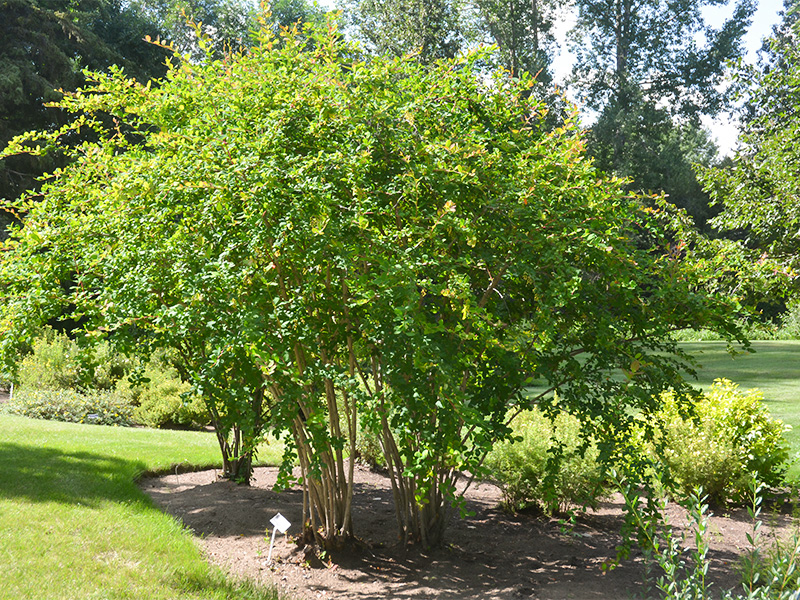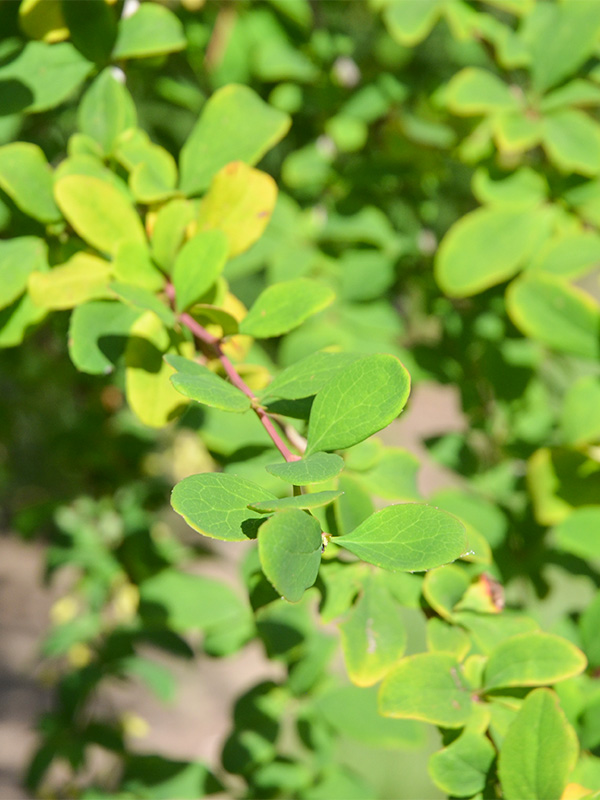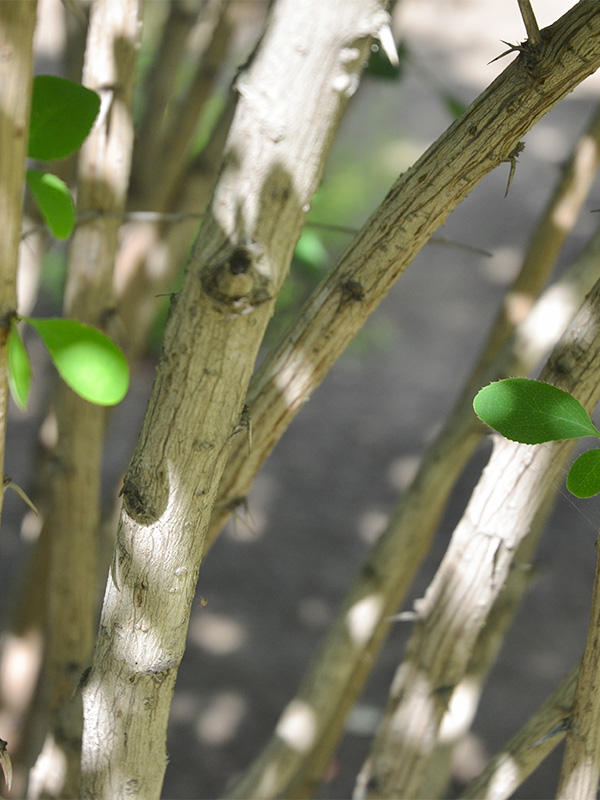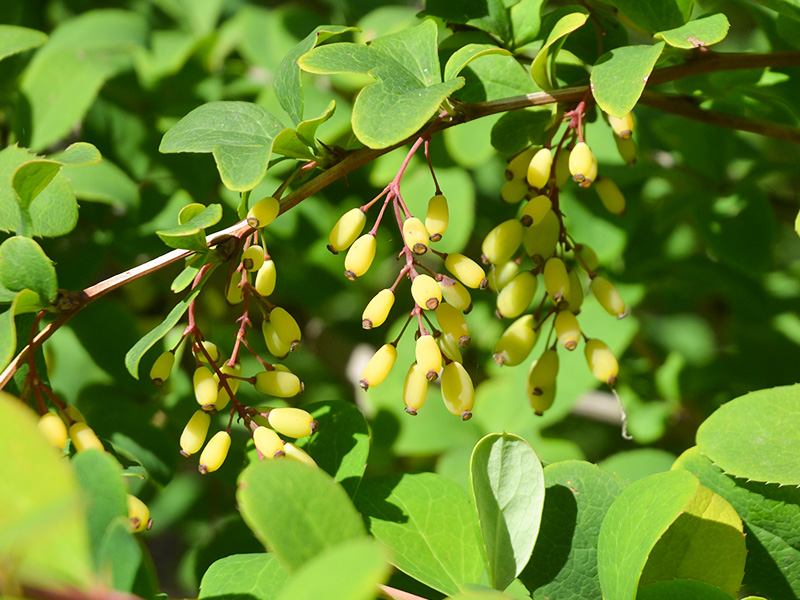| Shape | Dense, oval to rounded, upright and small form. |
| Landscape | Bed, borders, hedges, screens, informal, cottage and traditional gardens. |
| Propagation | Seed and cutting. |
| Cultivation | Full sun and partial-shade. Deer and drought tolerant. Moist, well-drained soil with acid, alkaline and neutral pH. Does well in clay, loam and sand. |
| Notable Specimens | The Devonian Botanic Gardens, Devon, Alberta, Canada. |
| Flower/Leaf Bud Description | The stems are reddish-brown in colour, glabrous and have clusters of 1 -5 spines, 3 -5 mm long at the nodes. |
| Leaf Description | Simple, alternate and elliptical leaves. 2.5 - 7.5 cm long with a serrated margin and a rounded apex. May drop or partially drop in autumn. |
| Flower Description | Pendulous clusters of showy flowers. |
| Fruit Description | Oval, egg-shaped berries, 3 - 5 mm long maturing in mid-autumn and persisting through the winter.
|
| Colour Description | The fruit is bright red in colour. The flowers are yellowish-gold. The leaves are a dark green that turn to a dramatic maroon to deep purple in autumn. The stems are red. |



